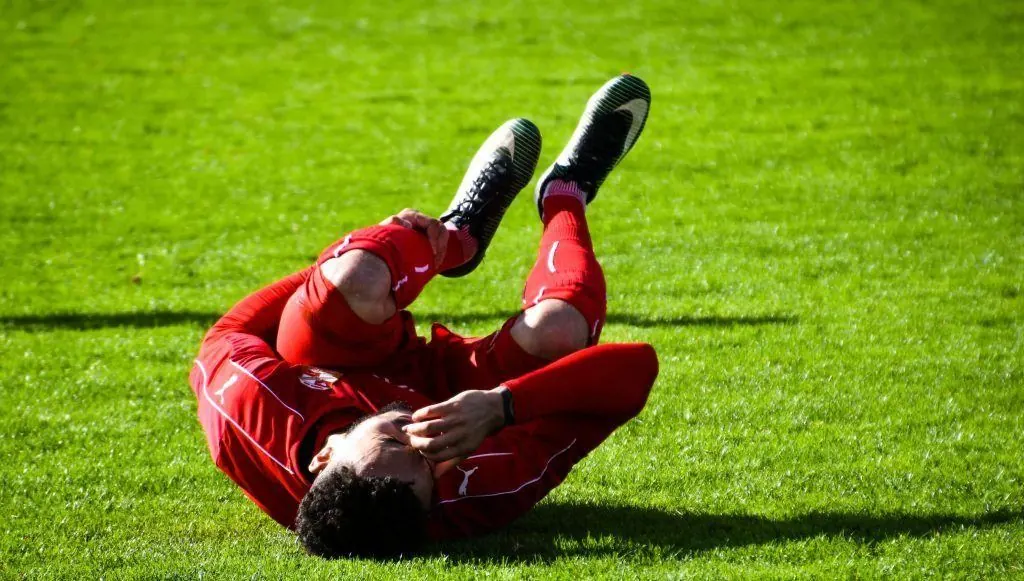Ankle fractures can be varied. Some of the more severe ankle fractures are bimalleolar and trimalleolar fractures. Surgery is often required for these fractures. The purpose of the surgery is to re-position the bones. During the operation, screws and plates will be used to keep the re-positioned bones in the ankle aligned so that they can begin to heal.
What are the Complications?
Swelling is often one of the first complications that occur. Potentially, swelling can become so severe in some patients that a fracture blister is formed. If the swelling is critical, the surgery to repair the ankle may be delayed. Swelling can also prevent the use of a boot/cast on the ankle. Studies show that the severity of swelling will play a role in how quickly the ankle begins to heal after surgery.
Fracture blisters do not occur in all patients but are more likely to happen at fracture sites involving wrists, ankles, knees, and elbows. This is because there is little tissue between the skin and the bone. If a fracture blister is going to occur it does so usually within hours of the injury. They may happen up to 2-3 weeks later.
In only about 2% of surgeries, a patient may experience an infection at the surgical site. This is a rare complication and is more common when the bone was exposed. If your wound seems abnormally red or you experience a discharge of pus from the site, seek medical treatment immediately. If this diagnosis is made, expect a long-term course of antibiotics to be prescribed. Studies show diabetics experience this complication more frequently than non-diabetics. Patients with diabetes should exercise extra attention to the appearance of the surgical site.
Due to the severity of the trimalleolar ankle fracture, a person may be advised to be non-weight bearing on the ankle for upwards of 2-3 months. The length of time the patient is recommended to avoid placing weight on the ankle will depend on the person, their weight, the speed the ankle is healing and the severity of the fracture.
Weight bearing can shift the placement of the repaired bones. If the bones heal misaligned, a person is more likely to experience osteoarthritis in the joints and/or foot. Therefore, it is important to avoid weight placement on the ankle.
At the beginning of physical therapy and for some time after, a patient can expect to experience bouts of pain, numbness, and tingling. They can also expect to feel unstable when trying to use their leg. It will be a while, but physical therapy will help restore motion and strength at the ankle site. The leg and foot also make atrophy while the ankle is healing. Therefore, the entire leg will need therapy.
What is Compartment Syndrome?
Compartment syndrome is a severe complication that can occur. Compartment syndrome occurs when the swelling becomes severe. Let’s say, for example, this happens while the foot is in the cast.
When this happens, the blood supply to the muscle can get cut off. This can cause the muscle tissue to die. If a person experiences acute pain after surgery that does not respond to medication, see your doctor immediately! A test will be done to test the amount of pressure building up. If diagnosed quickly, a normal recovery is possible. If the muscle dies, there will be permanent impairment of muscle function.
Watch YouTube Video: Compartment Syndrome Pressure Test. Below is a video demonstrating the test your doctor will perform to test the severity or existence of compartment syndrome.
Other Complications
Another severe complication is called malunion. This is more likely to occur if the fracture is not treated surgically. How significant of a problem this is for the patient will have a direct bearing to the age of the patient as well as their expectations or the degree of use of the ankle. Incorrect positioning can cause the joint to wear out quickly. Depending on the age of the person, a doctor may determine that a surgery is required if it becomes evident that the ankle is not healing properly. To avoid this complication, it is important to attend all follow-up appointment scheduled by your doctor.
The patient may feel exasperated by the number of appointments that occur after an injury such as this but these visits help physicians identify potential complications and treat them early!
One of the more common complications to the ankle joint is post-traumatic osteoarthritis. Basically, the ankle joint wears out faster. The typical treatment for such a diagnosis is medication. A person can expect the gradual loss of motion and strength in the ankle. Total ankle replacement may be an option for some patients.
A person who sustained bimalleolar and trimalleolar fractures in a traumatic accident, trucking collision, car accident, slip and fall, or motorcycle accident is entitled to compensation for their injury as well as any complication that occurs after the injury. If you experienced a bimalleolar and trimalleolar fractures and or complications such as those discussed in this blog, get the advice of a personal injury lawyer immediately.
Sacramento Personal Injury Lawyers
I’m Ed Smith and I have been practicing personal injury law in Sacramento for several decades. I know you have questions and I would like to help you in any way possible. I can be reached via phone at (916) 921-6400 or (800) 404-5400. If you want to learn more about my practice, see my website, AutoAccident.com.
I always encourage people to learn about my practice on Avvo, Yelp or Google.
Photo by: pixabay.com on pexels.com

